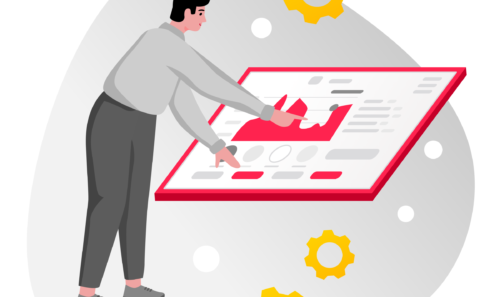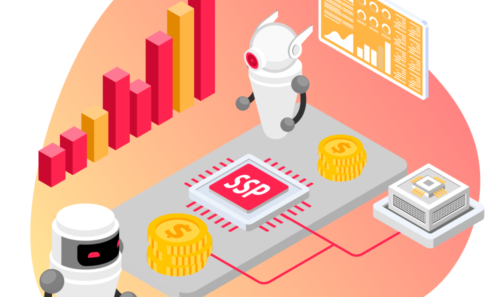How To Stand Out on the Programmatic Market?
The numbers are clear. According to the October IAB Europe report, for almost 70% of Advertisers, the Programmatic market is a channel that receives at least 41% of the annual budget for banner (display), video, and mobile advertising.
Table of contents
Programmatic sales facts and myths
Recognizing the value and quality of advertising space
External platforms to monitor your competitors’ CPMs
On the Publisher side, this percentage is slightly more conservative (at least 41% of the advertising space – inventory – is sold by about 40% of Publishers in this model), but with a notable increase year on year. And although the lucrative prospects are increasing, it is becoming more and more difficult to arrive on the Programmatic market and simply carve out a market share – the industry is maturing, global standards are being created, and the expectations of Internet users are growing in a commensurate fashion.
Programmatic sales facts and myths
Over the years, we have observed and heard the stories of Publishers starting to sell on the Programmatic market. Everyone saw in this sales model a great opportunity to earn extra money. At the same time, among their concerns, they often mentioned the difficulty of overseeing the implementation of budgets and the creations served through this channel; and the risk of losing the value of inventory that has been sold directly.
The fact is that Programmatic allows Publishers to reach tens of thousands of new Advertisers. This does not mean, however, that each of them will spend large or even noticeable advertising budgets with the Publisher. Rather, you should expect a sizable number of small and medium-sized campaigns. But as a result of this scale, an increase in revenues is always felt by the Publisher.
Recognizing the value and quality of advertising space
From time to time, an industry “urban legend” resurfaces, according to which a Publisher earned a fortune by not setting floor prices, i.e. the minimum price levels below which ads will not be sold. And although each case should be taken on its merits and with reports to hand, we generally advise against this direction. Floor prices are one of the best tools for overseeing the quality of an impression, which can be seen by users right next to the content that has been created by the Publisher. Here we advise against the presence of shock advertisements, but you should also be careful about misleading messages. And although everything may be a matter of taste, and the truth may lie somewhere in the middle, there is also an economic factor to be considered – the least attractive impressions deliver the lowest yield.
The one myth worth debunking is that Programmatic only allows you to achieve low CPM bids. Usually, in the first step of the adventure with this model, Programmatic is launched as a monetization channel for unsold advertising impressions in another model – that is, at the end of the chain. In AdServer, it is on a low priority, so only if the impressions are not used by Direct Campaigns will they reach the Programmatic market. This is an acceptable approach to start with, but ultimately Programmatic should have access to all the inventory, which will allow Publishers to achieve high CPM rates. In this market, ad impressions are sold in an auction, which is won by those who are willing to pay the most for the impression. Naturally, if the quality of the space sold is low (for example due to poor visibility of advertisements or low click-through rates for given ad space), high prices will not be achieved – however, this should only motivate Publishers to work on improving the quality of this ad space.

Raising the minimum prices reduces the number of impressions that are sold, and increases the rates actually achieved. The optimal point for making the most money is always somewhere in the middle. Occasionally, it may fall below the ad-quality pricing level. Sometimes – and here we come back to the aforementioned industry “urban legend” – it may be at the zero rate for a time! The optimal sweet spot changes with changes that take place on the market, which we see in the form of seasonal trends or the impacts of events (political, cultural, sports) on demand for advertising and the availability of the inventory. The key to success when it comes to bid optimization is daily and proactive verification and constant adjustment to a current situation (or the automatization of this process).
External platforms to monitor your competitors’ CPMs
It is also worth observing changes happening with your competitors as a Publisher it may not be easy, but the solution is to use external platforms to monitor your competitors’ CPMs and to listen to what the market is saying. Agencies are always eager to signal to Publishers that they can buy impressions of the same quality from competitors at a much cheaper price.
Is this a strategy worth pursuing? Yes. Because the prices, as well as the priorities available in the Programmatic, will always affect the value of the inventory being sold directly. Therefore, it is also important to ensure that the price list rates are up-to-date; and to verify their compliance with market trends. It is difficult to convince an Advertiser to buy ads directly from the Publisher at a CPM rate of PLN X, if on the Open Market Programmatic market they can pay five times less for equally high-quality ads (i.e. generating the same number of clicks or the same number of conversions on the customer’s landing page). Importantly, in this case, the Publisher receives an even smaller amount, because they have to bear the costs of the technological fees.
For this reason, the price lists and priorities of Direct Campaigns should be consistent with the prices and priorities of the campaign on the Programmatic market. This applies to both the Open Market and all Programmatic agreements (so-called deals, private auctions or preferential contracts), which have a slightly higher priority.









